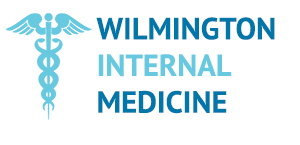Keeping Down The Bad Cholesterol
The higher your HDL-C (high-density lipoprotein cholesterol — the good kind), the more your body removes deposited cholesterol from blood vessels. The higher your LDL-C (low-density — the bad kind), the more likely cholesterol is being deposited.
To lower cholesterol, moderate physical activity and weight loss are recommended. Diet should include saturated fat of less than 7% of total calories. Total fat consumption should be no more than 35% of total calories. Poly- and mono-unsaturated fats lower LDL-C but polyunsaturated fats also lower HDL-C.
Saturated fats (animal, dairy) can dramatically increase the amount of cholesterol in the blood. Substituting monounsaturated fat (olive, peanut or canola oil) for saturated and polyunsaturated fats can reduce blood cholesterol levels without affecting HDL-C levels.
If a low fat diet and exercise do not help you achieve your cholesterol goal, medications called statins are recommended. These are not benign drugs and must be closely monitored. All adults should have their lipids checked at each annual physical. Careful attention and proper treatment of one’s good and bad cholesterol will help ensure a heart-healthy life.
It’s All New: How Research Refines Our Practice
Remember when we thought cholesterol over 260 mg/dl was bad? And then as we looked at emerging data, target cholesterol levels dropped in steps to 200, where we are now. We also found out that LDL, HDL and triglycerides are important factors, with some components actually being good for you. Remarkably, this shift has occurred in just the last 10-15 years.
Medical science is evolving so quickly that what was “true” 5 years ago may not be now. A recent editorial in the Cleveland Clinic Journal estimated that 90% of what was taught to doctors in 1950 is no longer true. We are fortunate to live in a time and place where exhaustive research is done, quickly and, for the most part, accurately.
There is often a 5- to 8- year delay between treatment revisions and when they become accepted practice norms. As rapidly as medical science is evolving, this interval should shrink and optimum care should grow dramatically.
NMR: A Better Cholesterol Test
A lot of exploration has gone into the study of cholesterol levels. For many years, medical professionals concluded that if you kept your “bad” cholesterol (LDL) below a certain number, you were in good shape.
However, as research and testing have evolved, what we now know is that the previous acceptable levels have changed. So has the testing.
It turns out that not all LDL cholesterols are the same. Some are fattier than others. A good example is donuts — some are plain, others are cream-filled. Some people have LDL that fills their arteries with a sticky kind of cholesterol that’s bad, even at low levels.
Traditional panels tests do not uncover this. But there is good news. A new test, NMR Lipoprofile, goes beyond the traditional formula for calculating LDL cholesterol. It actually indicates how much of that sticky stuff lurks in your arteries.
Diet and exercise are not always enough to prevent cholesterol-related health problems. Family history also plays a big role. You can change the course of your heart health through this simple NMR test.
